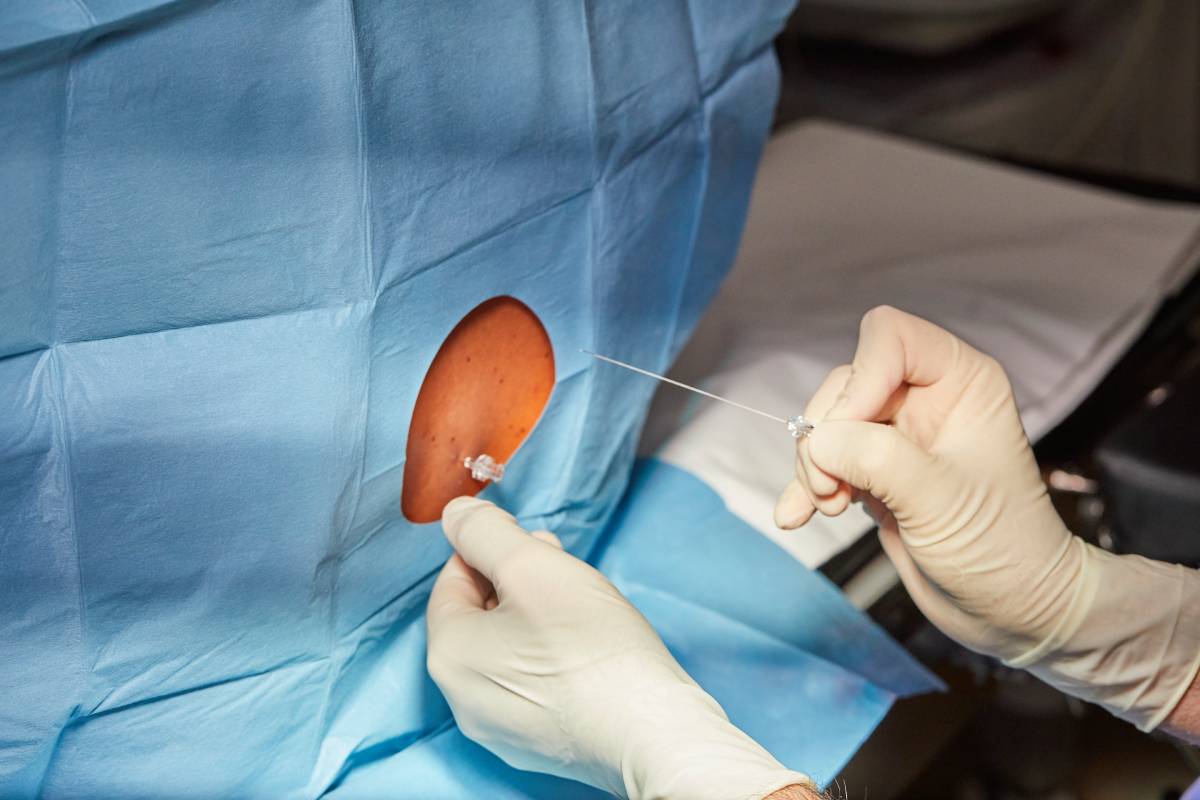In 1998, Suzuki et al. proposed an alternative to the combined spinal-epidural technique (CSE) [1]. CSE is an analgesic method used to provide pain relief during labor as well as gynecologic, orthopedic, and urologic surgery [1]. Although CSE improved on the standard epidural technique in many ways–it produced quicker analgesic onset, diminished motor blockade, and increased overall patient satisfaction–the technique is not without its disadvantages [2]. The possibility of puncture is especially concerning, given how puncture and subsequent injection of medication can lead to rapidly occurring apnea, miosis, and excessive hypotension [3]. Further, in obstetric contexts, CSE can impede fetal heart rate tracing and produce uterine hypertonus [4]. Confronted with this imperfect technique, Suzuki and colleagues advanced dural puncture epidural (DPE) as a potential substitute [1].
To perform a DPE, the anesthesia provider punctures the patient’s dura with a spinal needle, much like CSE [5]. However, the two methods differ on the basis that, in DPE, the physician does not inject any medication intrathecally [5]. Instead, neuraxial analgesia is achieved through the administration of medications via an epidural catheter [5]. The purported benefits of DPE are manifold. Some researchers suggest that the technique may provide anesthesia providers with greater certainty about epidural needle placements [2]. Others hypothesize that the technique could mimic CSE’s rapid onset rates because dural puncture may facilitate the partial transdural passage of opioids and local anesthetics [2]. In short, DPE seems to provide patients with the best of both worlds.
In practice, however, the benefits of DPE have not been so clear-cut. In a study comparing standard epidural technique (EPL) with CSE and DPE, the latter did not boast of all the aforementioned benefits [6]. Of the three techniques, analgesia onset was most rapid with CSE [6]. More interestingly, DPE appeared to provide analgesia onset at comparable rates with EPL [6]. The researchers did find, however, that DPE was associated with improved block quality over EPL [6]. Compared to the combined spinal-epidural technique, DPE led to fewer fetal and maternal side effects among parturients who had requested early labor analgesia [6]. Although it fell short of embodying all of the advantages and none of the disadvantages of CSE, the dural puncture epidural technique nevertheless appeared somewhat beneficial.
Despite this somewhat positive finding, subsequent meta-analyses have revealed the rather uncertain effects of DPE. Layera et al. conducted a meta-analysis of six randomized controlled trials focused on labor analgesia [4]. They found inconsistent results. For instance, while some studies reported that dural puncture with small (meaning around 26- or 27-gauge) spinal needles contributed to decreased pain scores and improved analgesia within ten minutes, others suggested that this technique had minimal effects at best [4]. Segal and Pan also noted the methodological flaws of past studies that had reported that DPE produced a quicker onset of sacral analgesia than CSE [2].
While previous research indicates the uncertain efficacy of DPE in the general parturient population, Tan et al. tested DPE among a novel population: obese parturients [5]. On its face, DPE would also appear to pose particular benefits to this population, whose anatomy may make it difficult to properly identify the epidural space [2]. Despite this purported benefit, the researchers did not find a statistically or clinically significant difference among their primary outcomes between patients in the dural puncture epidural or standard epidural group [5]. As such, Tan et al. concluded that their research did not support the routine use of DPE in obese parturients [5].
Ultimately, the evidence does not suggest that DPE is a suitable replacement for CSE for labor analgesia. However, researchers have noted that investigating certain elements of the technique–such as ideal needle size and how local anesthetics and opioids flow in the presence of a dural hole–could help anesthesia providers achieve better results with the technique [4]. With greater certainty about its chief mechanisms, the dural puncture epidural technique in obstetric populations could be more supported. Additional research on the technique’s use in surgery is also needed.
References
[1] N. Suzuki et al., “Dural puncture with a 26-gauge spinal needle affects spread of epidural anesthesia,” Anesthesia & Analgesia, vol. 82, no. 5, p. 1040-1042, May 1996, [Online]. Available: https://bit.ly/3LLiJKP.
[2] S. Segal and P. H. Pan, “Dural Puncture Epidural for Labor Analgesia: Is It Really an Improvement over Conventional Labor Epidural Analgesia?,” Anesthesiology, March 2022, [Online]. Available: https://doi.org/10.1097/ALN.0000000000004187.
[3] A. Chau and L. C. Tsen, “Dural Puncture Epidural Technique: a Novel Method for Labor Analgesia,” Current Anesthesiology Reports, vol. 7, p. 49-54, February 2017, [Online]. Available: https://doi.org/10.1007/s40140-017-0197-6.
[4] S. Layera et al., “A systematic review of DURAL puncture epidural analgesia for labor,” Journal of Clinical Anesthesia, vol. 53, p. 5-10, March 2019, [Online]. Available: https://doi.org/10.1016/j.jclinane.2018.09.030.
[5] H. S. Tan et al., “Quality of Labor Analgesia with Dural Puncture Epidural versus Standard Epidural Technique in Obese Parturients: A Double-blind Randomized Controlled Study,” Anesthesiology, February 2022, [Online]. Available: https://doi.org/10.1097/ALN.0000000000004137.
[6] A. Chau et al., “Dural Puncture Epidural Technique Improves Labor Analgesia Quality With Fewer Side Effects Compared With Epidural and Combined Spinal Epidural Techniques: A Randomized Clinical Trial,” Anesthesia & Analgesia, vol. 124, no. 2, p. 560-569, February 2017, [Online]. Available: https://doi.org/10.1213/ANE.0000000000001798.
